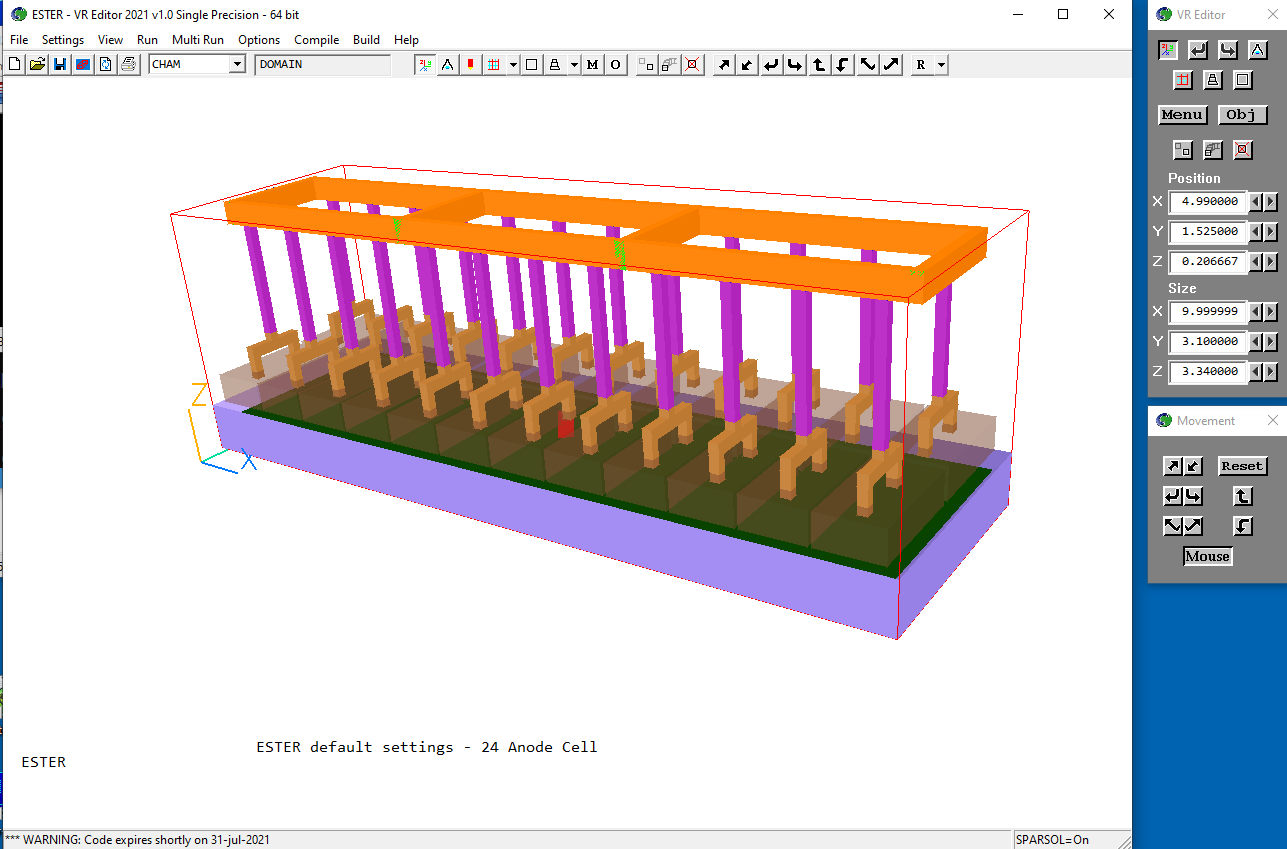
ESTER is a computer program developed specifically for the simulation of multi-anode electrolytic smelters of the Half-cell type. It is a derivative of the PHOENICS code, the most widely used and well-validated flow simulation suite in the world, which bases its predictions on solving the fundamental equations of fluid flow.
Features
of ESTER
ESTER enables the user to represent the smelter fully in 3-D taking into account
all the major features of its design:
- any number of anodes in any arrangement;
- the frozen electrolyte 'freeze' around the edge of the cell;
- distortion of the metal-electrolyte interface due to pressure differences and due to vertical Lorentz Forces;
- erosion of the anode undersides to follow the shape of the metalelectrolyte interface; and
- current generation due to the motion of the metal - the induced current;
The program solves the fundamental governing equations for:
- three components of metal velocity;
- three components of electrolyte velocity;
- the pressure;
- the gas fraction under the anodes, and the inter-anode gaps; and
- the electric potential distribution.
Based on these, it deduces:
- the height of the metal-electrolyte interface, and the height of the electrolyte free surface; and
- the electric current distribution, and the induced currents. These, together with given magnetic fields, are used to compute the Lorentz forces which drive the flow.
ESTER Extensions
ESTER is configured to be easily extendible, either by the user, or by CHAM.
Features which can easily be added if required for a particular application include:
- thermal calculations, including the formation of freeze;
- calculation of aluminium oxide concentration in the electrolyte;
- interface to magnetic field calculation programs;
- interface to programs which can update the anode potentials and the cathode currents.
Links
For further information about ESTER, licence arrangements, consultancy, seminars and courses, and more specifically what it can do for you, contact CHAM.